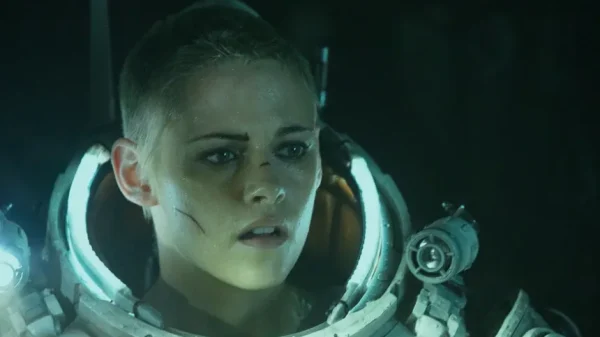Choosing between a DSLR and a mirrorless camera often brings photographers to a crossroads, especially those who are either just stepping into photography or looking to upgrade their equipment. The two types of cameras offer different structures and operate with unique mechanisms.
While both deliver excellent image quality, they are built with different systems that influence factors like size, autofocus performance, and lens compatibility. Understanding these differences is vital when deciding which camera better fits your personal needs and professional ambitions.

DSLRs still bring classic charm to modern photography (Photo: Getty Images)
Over the years, mirrorless cameras have gained popularity due to their compact build and technological advancements. At the same time, DSLRs continue to maintain their relevance, especially for those who value a traditional shooting experience.
While the industry seems to be gradually embracing mirrorless systems, many photographers still find comfort and reliability in DSLRs. That said, the choice between the two involves more than just picking the latest model. It requires careful consideration of specific features that impact shooting styles, preferences, and budget.
Below is a breakdown of how each camera type performs across multiple aspects that matter to most photographers, whether beginners or professionals.
Size and Weight
One of the first things anyone notices when holding a mirrorless camera is how light and compact it feels compared to a DSLR. Mirrorless models, as their name suggests, lack the mirror mechanism found in DSLRs, which allows them to be smaller in size.
This makes them easier to carry around, especially during long outdoor shoots or travel photography assignments. Photographers who often shoot on the move may find this advantage quite helpful.
DSLRs, on the other hand, have a mirror box and a prism, making them larger and bulkier. Although this results in more weight, it also gives a sense of sturdiness and balance. Many professionals prefer the grip and build of DSLRs, especially when using heavy telephoto lenses.
The weight helps to stabilize long lenses during handheld shooting. This solid build is also known to withstand harsh weather conditions, making it a preferred option for wildlife or sports photography in unpredictable environments.
Autofocus Speed and Accuracy
Mirrorless cameras use on-sensor phase detection and contrast detection autofocus, which can deliver fast and accurate focus, especially during video recording.
Because they rely on digital data directly from the sensor, the focus points can cover a wider area of the frame. This is particularly useful for tracking moving subjects, and eye detection technology in many mirrorless models has become impressively responsive.
DSLRs use a separate autofocus sensor that functions through the mirror mechanism. While high-end DSLRs can match mirrorless autofocus speed in good lighting, they often struggle during live view or video mode.
The focus area is also more limited, as it is generally confined to the center of the frame. However, DSLR autofocus systems are still preferred in some scenarios, such as shooting fast action with optical viewfinders, where lag and screen refresh are not a concern.
Battery Performance
DSLRs tend to have longer battery life compared to mirrorless cameras. This is largely due to the optical viewfinder that does not rely on electronic displays, which consume more power. A DSLR can shoot thousands of photos on a single charge, making it an ideal choice for long events, such as weddings or extended wildlife photography sessions where charging opportunities are limited.
Mirrorless models rely on electronic viewfinders or LCD screens, both of which draw power constantly. As a result, the number of shots per charge is typically lower.
Some newer mirrorless cameras have improved battery efficiency, but they still fall short when compared directly with DSLRs. Carrying extra batteries becomes a necessity for mirrorless users who plan long-day shoots or trips where power access is uncertain.
Viewfinder Experience
Using a DSLR offers a direct optical view through the lens using a mirror and prism. This gives a clear and natural representation of the scene without any digital processing.

Viewfinder Experience (Photo: Shutterstock)
The benefit of this is that it works well even in very bright conditions and does not suffer from lag. Many photographers appreciate the realism that comes with viewing through an optical system.
Mirrorless cameras use electronic viewfinders or only the rear screen. These digital displays provide a preview of how the final image will look, including exposure and colour adjustments. It allows photographers to make changes in real-time and see the effects instantly.
However, electronic viewfinders can introduce delays or blackout in certain situations, though newer models have reduced this issue to a large extent.
Lens Compatibility
DSLRs have been around longer, and as a result, they have a wide selection of lenses available. Brands like Canon and Nikon offer decades’ worth of compatible glass, including budget-friendly options and highly specialised lenses. This gives users flexibility, especially for those who want to expand their lens collection without spending heavily on new models.
Mirrorless systems, being newer, have fewer native lenses, though the selection is growing rapidly. Many camera brands offer lens adapters, which allow photographers to use DSLR lenses on mirrorless bodies.
However, adapters can add bulk and sometimes reduce autofocus performance. For photographers who already own DSLR lenses, making the switch to mirrorless may require additional investment or compromise in functionality.
Video Recording Features
Video has become the main feature in modern cameras, and mirrorless models usually lead in this area. They provide better autofocus during video capture and often support advanced recording options such as 4K and higher frame rates. Since the autofocus works directly through the sensor, there is no need for mirror flipping or live view limitations.
DSLRs can record video too, but their autofocus is slower and less reliable, especially when tracking movement. Manual focus is often required for smooth results. Also, DSLRs are not as compact or silent during operation, which can be a drawback during video shoots where sound quality and mobility are important.
Durability and Build Quality
Photographers working in rough environments or extreme weather conditions often rely on cameras with strong bodies. DSLRs are usually built with magnesium alloy or weather-sealed materials, which gives them a rugged feel. Their larger grip also allows for better handling with gloves or when shooting for extended periods.
While mirrorless cameras are catching up in terms of toughness, many still prioritise lightness over rugged construction. Some premium mirrorless models offer weather-sealing, but they tend to be expensive. Those who work outdoors or in demanding settings might still lean towards DSLRs for their proven durability.
Shooting Speed and Burst Rate
Mirrorless cameras tend to have the upper hand when it comes to burst shooting. Without the need for a mirror to flip between each shot, they can achieve higher frame rates, making them suitable for action, sports, or wildlife photography. Silent shooting is another benefit, allowing photographers to shoot discreetly in quiet environments.
DSLRs are capable of fast shooting too, but the physical mechanism limits how quickly they can capture continuous frames. The presence of a mirror also introduces vibration, which may affect image sharpness during rapid bursts. However, high-end DSLR models still perform strongly in this aspect and are used by professional sports photographers worldwide.
Price and Budget Considerations
For many buyers, cost plays a major role. DSLRs often provide better value for money, especially for beginners. Entry-level DSLR kits come at more affordable prices and include lenses, making it easier for newcomers to start photography without spending too much. The availability of second-hand lenses and accessories also helps manage expenses.

Choosing your camera means choosing your shooting style (Photo: Twitter)
Mirrorless cameras, particularly newer ones, are often more expensive. While there are budget-friendly models available, they may lack certain features found in mid-range DSLRs. That said, the price gap is slowly reducing, especially as more brands develop mirrorless systems and release more affordable options.
Technological Advancements
Mirrorless models frequently come with the latest technology, including touchscreens, real-time previews, in-body image stabilization, and advanced face or eye tracking. Since they are newer, manufacturers tend to focus their innovation on this format. Users who enjoy experimenting with the latest digital features may find mirrorless cameras more attractive.
DSLRs, being based on older technology, receive fewer updates. While reliable and durable, they often miss out on cutting-edge tools found in newer mirrorless designs. For those who place importance on staying current with evolving features, the mirrorless system might feel more appealing.
Future Support and Market Trends
The camera industry has seen more product launches centred around mirrorless systems in recent years. Many leading brands are dedicating their research and development towards expanding mirrorless lineups. This suggests that future accessories, lenses, and firmware updates are likely to favour this format.
DSLRs still enjoy strong community support and plenty of resources, but the pace of innovation for them has slowed. Photographers who invest in mirrorless systems now may benefit from better future compatibility and wider support in the years ahead.
Choosing between DSLR and mirrorless cameras requires attention to personal shooting style, budget, and the kind of work one plans to pursue. DSLRs offer durability, longer battery life, and an established ecosystem of lenses, which makes them dependable for many users. Mirrorless systems bring compact design, quicker burst rates, and advanced autofocus features, making them ideal for modern, mobile photography.
Each option presents strengths and weaknesses, and neither completely replaces the other for every situation. Those just starting may find DSLRs more accessible financially, while those focused on video work or seeking cutting-edge technology may lean towards mirrorless. By assessing what matters most in your creative journey, you can decide which tool supports your goals better.
























